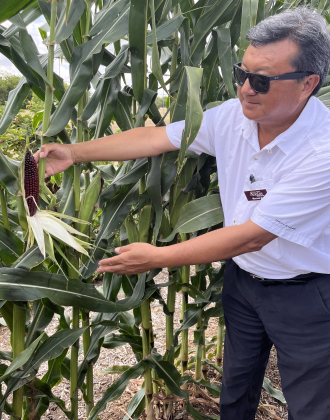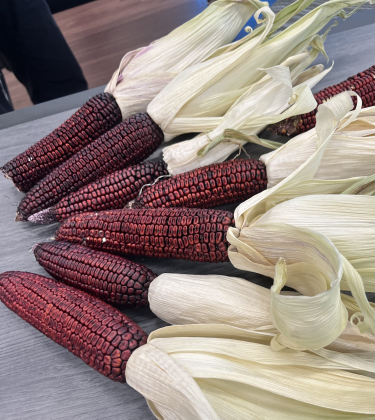The Williamson County AgriLife branch had a presentation July 7 about a new breed of corn, TAMZ102, that is higher in antioxidants and anthocyanins than traditional corn. The presentation was given by Wenwei Xu, the breeder himself, who has spent the last 10 years in his lab creating what he called the perfect hybrid crop.
Mr. Xu is a professor in the Department of Soil and Crop Sciences at Texas A&M. He has been cross breeding traditional corn with its evolutionary relative, Tripsacum, also known as gamma grass. He found that the Tripsacum-derived lines are able to produce high-yielding hybrids and are resistant to fall army worm, a crop pest.
Thus, Mr. Xu developed TAMZ102, a Tripsacum-derived corn that is more resistant to pests and preharvest mycotoxin contamination than traditional corn.
Mr. Xu walked the audience through the process of breeding the corn. TAMZ102 isn’t yet available commercially, as he is still working on getting it up to corporate standards. However, it is growing it in different places including Lubbock, Odessa, Austin, Edinburg and the garden at the Williamson County AgriLife branch.
He said TAMZ102 is lower in sugar than traditional corn, which makes it a better option for people who are watching their sugar intake. It is also purple in color—much like blueberries or blackberries which are both also high in antioxidants.
“The darker the corn is, the higher the antioxidant content is,” said Kate Sindac, the extension agent for Family and Community Health. “This corn has 100 times more antioxidants than other breeds of corn.”
Mrs. Sindac explained that anthocyanins and antioxidants are important for mental health, brain health and eye health. They are also important for non communicable diseases like type two diabetes and heart disease.
Bob Whitney, the AgriLife Extension Office’s organic program specialist, believes that there is a market for corn with high antioxidant content. He said he could see it being used as a nutraceutical — which is a food used in supplements to treat medical conditions — or to create unique dishes and food products.
Mr. Whitney also believes that the corn would make good animal feed for dairy cows and other livestock. He explained that corn that is higher in antioxidants would help animals stay healthy. This is important for organic farmers who can’t feed their animals antibiotics.
Mr. Xu said a pig fed with the purple corn makes a fantastic pork loin.
The presentation concluded with a corn tasting. The product was less sweet and more starchy than traditional corn, with a more meaty consistency because it had less water content. Mr. Xu suggested pairing the corn with thinly-sliced jalapenos and seasoning it to the chef’s liking.



